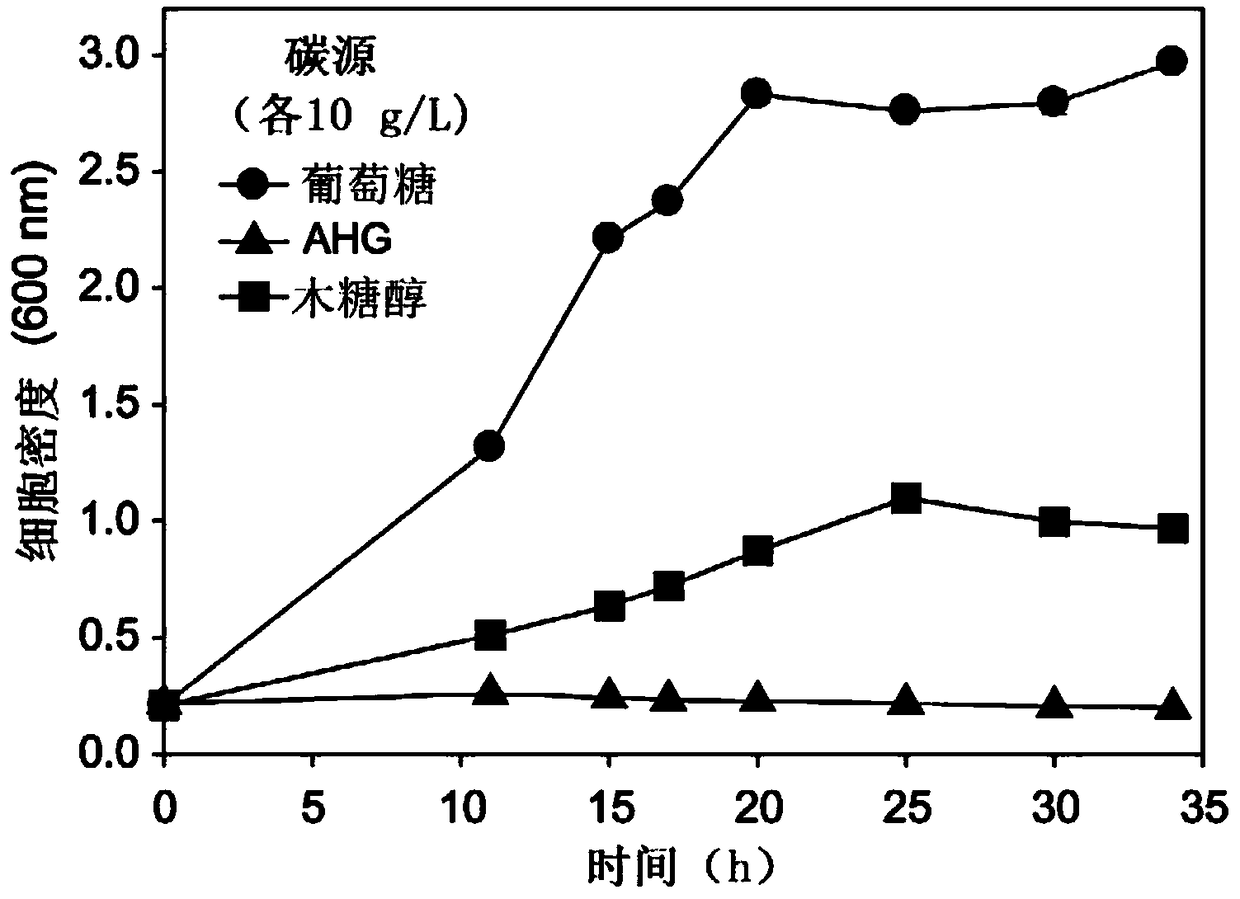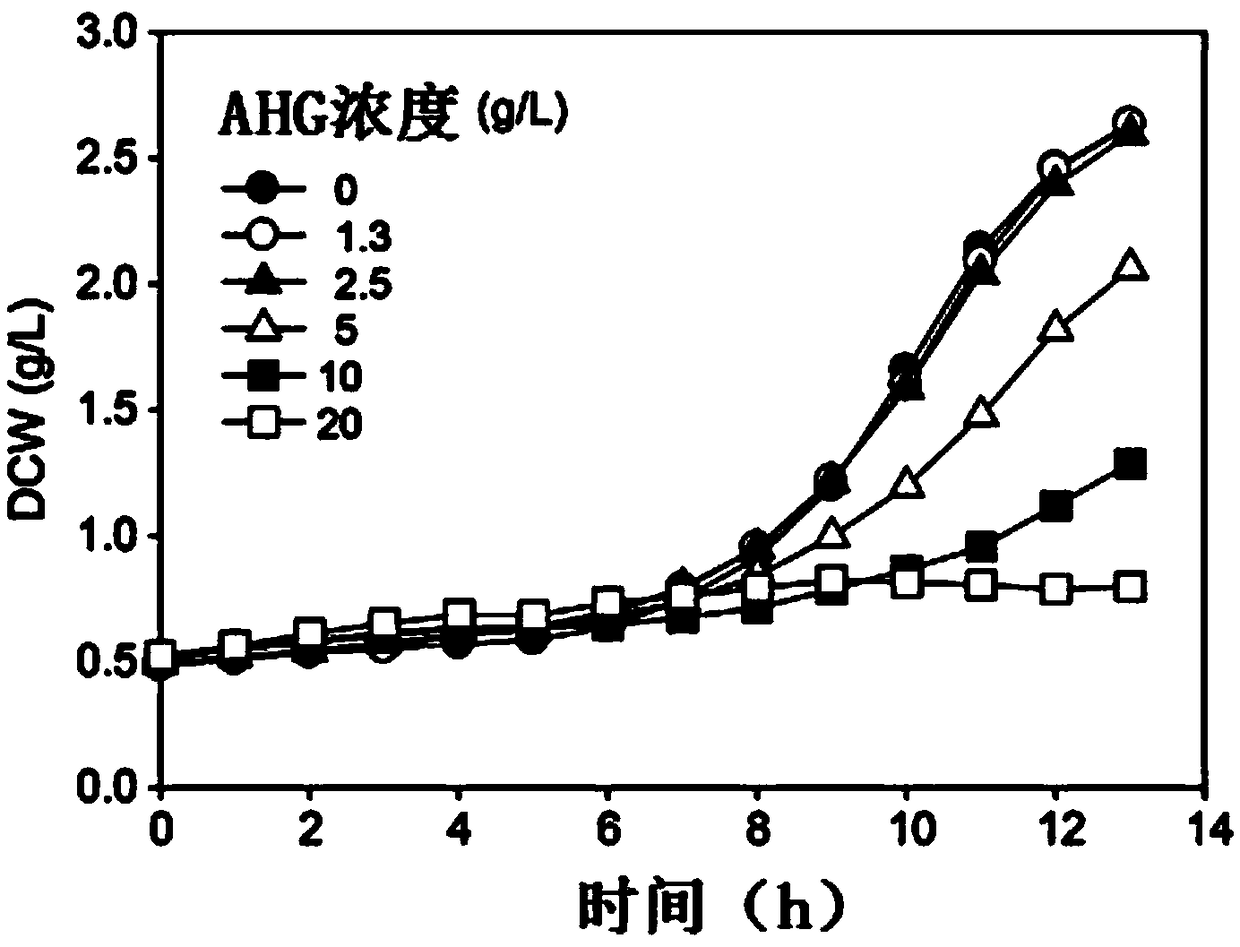Use of 3,6-anhydro-l-galactose for preventing dental caries
一种半乳糖、龋齿的技术,应用在3领域,能够解决天然糖不足等问题
- Summary
- Abstract
- Description
- Claims
- Application Information
AI Technical Summary
Problems solved by technology
Method used
Image
Examples
Embodiment 1
[0108] Agarose pretreatment
[0109] The agarose was dissolved in 3N acetic acid to a concentration of 7% (w / v), and reacted at 130°C for 10 minutes using a microwave digester, and then the reaction product was washed twice with 1.5L of 94% ethanol to remove residual acetic acid and excess Decomposition products. The reaction product was freeze-dried for 24 hours to obtain powdered agar-oligosaccharides.
Embodiment 2
[0110] 3,6-Anhydrous-L-galactose is produced by enzymatic hydrolysis of agar-oligosaccharides
[0111] The acid hydrolysate (agar oligosaccharide) produced in Example 1 was reacted with exo-type β-agarosease (i.e., Aga50D) (refer to Korean Patent Application Publication No. 2010-0040438 published on April 20, 2010) , In order to make it decomposed into D-galactose and 3,6-anhydrous-L-galactose (both monosaccharides), and as a reaction product to generate agarotriose and new agarobiose.
[0112] After the Aga50D reaction is completed, the agarotriose is treated with the enzyme VejABG (enzyme that can decompose the β-1,4 bond at the non-reducing end) (see Korean Patent Application Publication No. 2015-0043040 published on April 22, 2015) , To produce 3,6-anhydrous-L-galactose and new agarbiose.
[0113] In order to produce D-galactose and 3,6-anhydrous-L-galactose (monosaccharides) from New Sepharose, the reaction product of VejABG and the SdNABH enzyme (see Korean Patent Application...
Embodiment 3
[0115] Separation and purification using silica gel chromatography and Bio-Gel P2 chromatography
[0116] Chromatography was performed to separate and purify only 3,6-anhydrous-L-galactose from the reaction product prepared in Example 2. The reaction product is adsorbed on diatomaceous earth to form a sample in powder form, and then subjected to silica gel chromatography (adsorption chromatography). A solvent obtained by mixing chloroform, methanol, and water in a ratio of 78:20:2 (v / v / v) was used as the mobile phase, and the total volume of the solvent as the mobile phase was 4L. The volume of one part is 20 mL, and a sample consisting of a total of 200 parts is analyzed by TLC, thereby collecting the part containing 3,6-anhydrous-L-galactose therein, and removing the organic solvent therefrom using a rotary vacuum concentrator .
PUM
 Login to View More
Login to View More Abstract
Description
Claims
Application Information
 Login to View More
Login to View More - R&D
- Intellectual Property
- Life Sciences
- Materials
- Tech Scout
- Unparalleled Data Quality
- Higher Quality Content
- 60% Fewer Hallucinations
Browse by: Latest US Patents, China's latest patents, Technical Efficacy Thesaurus, Application Domain, Technology Topic, Popular Technical Reports.
© 2025 PatSnap. All rights reserved.Legal|Privacy policy|Modern Slavery Act Transparency Statement|Sitemap|About US| Contact US: help@patsnap.com



